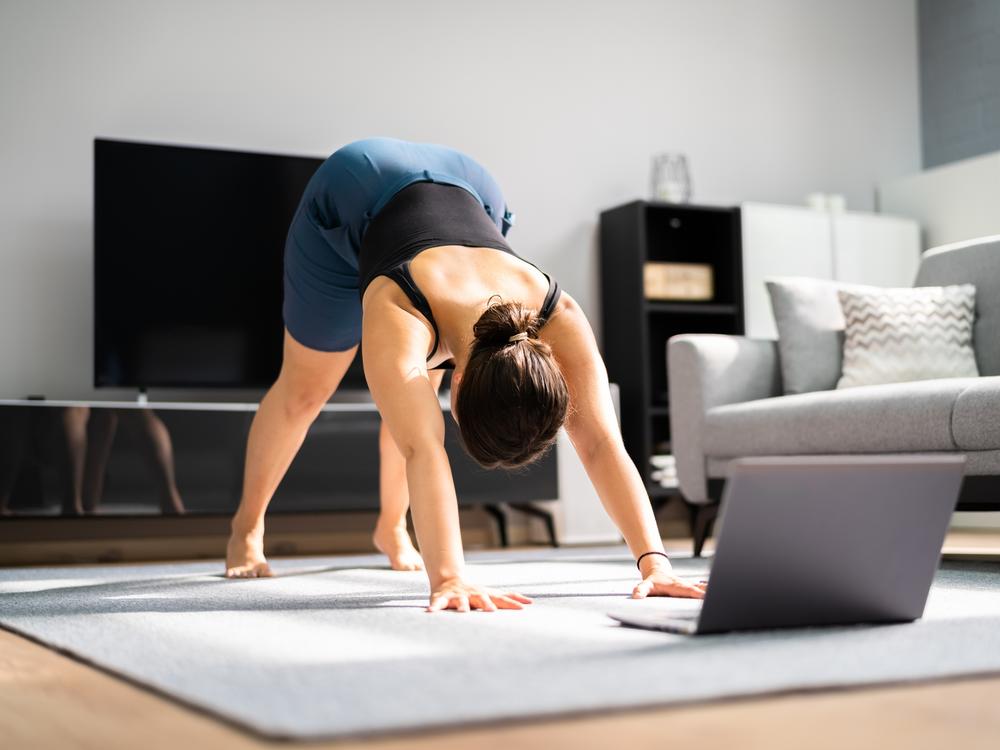Section Branding
Header Content
Online yoga classes prove helpful for back pain in new study
Primary Content
Online yoga classes relieved chronic low back pain and slashed the need for pain-relief medications, a new study shows.
Back pain sufferers who took 12 weeks of virtual live-streamed yoga classes also slept better and moved more easily than participants on a wait list for the classes, the study published in early November in JAMA Network Open reported.
"Their pain levels really were cut in half," said Dr. Robert Saper, the study's senior author and chair of the department of Wellness and Preventive Medicine at the Cleveland Clinic.
"I find this very exciting because we have this huge chunk of patients, 95% of patients, where we sometimes don't know what to do," said Dr. Roger Hartl, neurosurgical director of Och Spine at New York-Presbyterian/Weill Cornell Medical Center, who was not involved with the study.
Virtual yoga would be something to offer such patients, he added. "Why not, if it works, it's safe and effective?"
Americans spend an estimated $135 billion a year in health care related to lower back pain, and an estimated 80% of adults suffer from it, previous studies have shown.
The new study focused on health care employees, group with a lot of back pain.
The study authors note patients often find it challenging to attend in-person yoga classes. "As a result, medications and other higher-risk interventions are often prescribed, despite their limited effectiveness and risk of adverse effects," the study says.
After the COVID-19 pandemic forced many yoga teachers to offer classes online, Saper and his colleagues decided to test the effectiveness of virtual yoga in what they believe is the first study of its kind.
Researchers divided 140 Cleveland Clinic employee health plan patients in Ohio and Florida with chronic low back pain into two groups: one received virtual hatha yoga classes, and the other was on a wait list for yoga.
At the beginning of the study, participants, mostly college-educated white women between the ages of 38 and 59, reported their back pain levels as around 6 out of 10. After six weeks, the yoga students' reported pain levels dropped to 4, and after six months, slid to 3. The pain levels of those on the waiting list remained constant.
At the beginning of the study, 74% of participants were taking some form of pain medicine. Six months later, less than one-third of the yoga practitioners were taking pain medication, while more than half of the wait-list patients continued taking aspirin, ibuprofen, opioids and other pain relievers.
"I think this expands the list of options for patients," Saper said of the study results.
Earlier this year, Och Spine's Hartl and his colleagues published a similar study showing that a 12-week virtual program of tai chi, qigong and meditation relieved pain and improved sleep in adults with lower back pain.
"Obviously, yoga is somewhat different," Hartl said, "but certainly I think this all goes in the right direction, namely, that these types of virtually guided interventions can be really helpful in patients."
Numerous previous studies have demonstrated the benefits of yoga or other back-related exercise to ease chronic low back pain or improve function. The quality of the evidence in many of these was not high though, note the authors of a 2021 Cochrane review. This is partially because it's difficult to blind participants to the fact they are doing yoga.
Saper noted that yoga, "like many other self-care practices, is not a quick fix."
First, practitioners must learn how to properly and safely do the yoga postures. The classes in the study were tailored to beginning yoga students, and trained teachers showed students how to use supportive props, like blocks and chairs, to adapt poses to their skill levels.
Students in the study received video recordings and detailed workbooks to help them practice safely on their own.
The National Institutes of Health considers yoga generally safe "for healthy people when performed properly, under the guidance of a qualified instructor" but cautions, "as with other forms of physical activity, injuries can occur."
Studies have documented a range of injuries linked with yoga, especially among older people.
Three of the new study's participants who took yoga classes reported temporary flareups of back pain, possibly related to the yoga.
Saper advises people experiencing back pain to ask their doctors if therapeutic yoga is appropriate for them. People who suffer from chronic pain should only take yoga classes geared to them, he said.
Saper also tells yoga practitioners to "listen to your body as you move and adjust accordingly."
Stretching can cause discomfort, he said. But, he added, "If you feel pain, you should come out of the pose or ask the instructor for variations."
Ronnie Cohen is a San Francisco Bay Area journalist focused on health and social justice issues.

